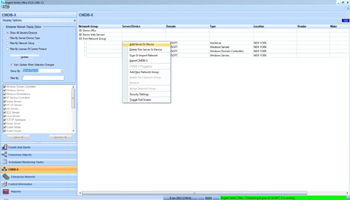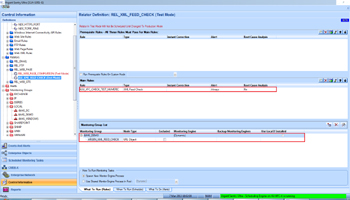KBI 310370 Configuring An XML And Checking With A Threshold Value Using Argent Sentry Ultra
Version
Argent Advanced Technology 1304-A and above
Date
Wednesday, 24 Apr 2013
Summary
Argent Advanced Technology has been enhanced with a new rule in Argent Sentry – Xml Feed Check Rules – to compare an xml element or an xml attribute with a specified value
Technical Background
This compares an xml element or an xml attribute with a specified value provided.
Specify the comparison element in the ‘XML Element‘ field. For example: pubDate.
If it has any attribute field, mention it in the ‘XML Attribute‘ field
The ‘Check Option‘ filed has the following three options for comparison
- Compare With All XML Feed Values – It compares the specified xml element with all values of the similar type element
- Compare With Lowest Feed Values – It compares the specified xml element with the lowest value of similar type xml element
- Compare With Highest Feed Values – It compares the specified xml element with the highest value of similar type xml element
The rule condition can be set in ‘XML Feed Rule Condition‘.
The data type of the xml element may be specified as numeric, text or date/time
Numeric Data Type
The numeric data type has the following comparison options:
- Less Than
- Less Than Or Equal
- Equal
- Greater Than Or Equal
- Greater Than
- Not Equal
Two conditions can be specified using the ‘AND‘ option provided
Text Data Type
The Text data type has the following entries
- Contains – The xml feed string is contained within (becomes a part of) the given string
- Is Empty – The xml feed string is empty
- Is Not Empty – The xml feed string is present
- Matches – The xml feed string is exactly similar to the given string
- Does Not Match – The xml feed string does not match with the given string
If the data type is Text, selecting the highest or lowest value options in the check option is irrelevant
Date/Time Data Type
It has four options:
- Date Only
- Time Only
- Date And Time
- Displacement
For the first three options, the rule can be set by selecting any one of the conditions-‘Less Than‘, ‘Less Than Or Equal‘, ‘Equal‘, ‘Greater Than Or Equal‘, ‘Greater Than‘ and ‘Not Equal‘. It is possible to compare the date and time between two dates or time intervals by checking the AND option
If the displacement option is used, the xml feed element can be compared using either of the following two ways:
|
It compares the xml feed with the time when the rule is executed. | |
|
It allows comparing the xml element with a specific date provided. Select the Displacement Unit as day or hour or minute. The rule can be set by selecting any one of -‘Less Than‘, ‘Less Than Or Equal‘, ‘Equal‘,’Greater Than Or Equal‘, ‘Greater Than‘ and ‘Not Equal‘ option and by providing the value Use the AND option to specify two conditions |
Following sections describes detailed step by step instructions
Step 1: Add New URL Object (XML) Whose Data Are To Be Checked
FYI:
A fresh installation of Argent Sentry Ultra 1304-A automatically inserts a sample licensed node to test XML rule. All you need to do is setting the URL to test as an alias in the licensed object through Administration->License Manager. If you are upgrading from an old version you have to follow the following instructions to configure a licensed object
Step 2: Specify The XML URL To Check In ‘URL Address’
Step 3: License Newly Added URL Object
Step 4: Configure The Rule (Mock Up Screenshot)
Specify the condition to check the rule
Other Check Options are,
- Compare With Lowest XML Feed Value
- Compare With Highest XML Feed Value
Other Rule Breaking Conditions are,
- When Any Of XML Feed Values Satisfy
- When XML Tag/Attribute Not Found
Rule conditions can be configured for numeric, text and date values
Step 9: Configure The Relator With Newly Configured Rule And The Monitoring Group That Contains Newly Licensed URL Object
Resolution
N/A




